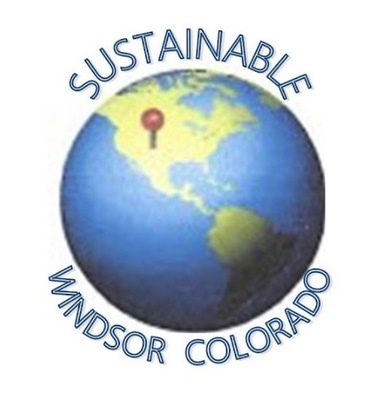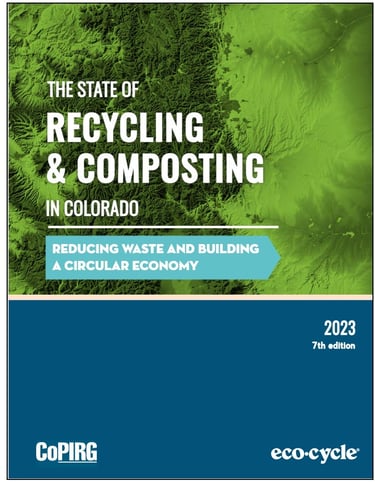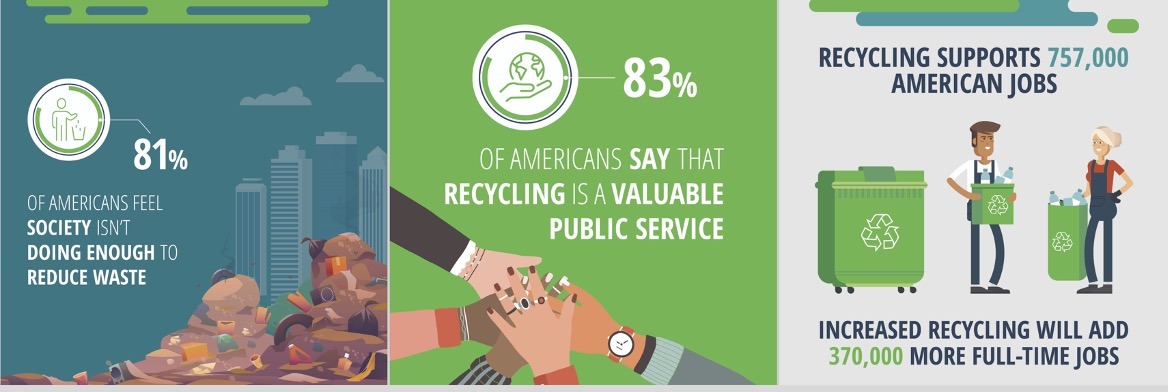CHALLENGES
If you go to https://www.waste360.com/waste-recycling/new-report-ranks-u-s-states-based-on-recycling-performance -- you will see the current statistics on Recycling:
The study found the 10 states with the highest recycling rate for common containers and packaging materials (CCPM) excluding cardboard and boxboard in 2018 are: Maine (72%); Vermont (62%); Massachusetts (55%); Oregon (55%); Connecticut (52%); New York (51%); Minnesota (49%); Michigan (48%); New Jersey (46%); and Iowa (44%)
The Report states ...
"Not all recycling is created equal, and we should prioritize recycling of materials that have the greatest potential to reduce greenhouse gas (GHG) emissions and the highest value for creating new products.
Collection and recycling are not synonymous, as the quantity of material collected for recycling today is often far greater than what is actually processed and recycled into new products with non-recyclable contaminants making the entire system less effective.
Recycling policies, such as a Deposit Return System (DRS), or "bottle bill," and investment in infrastructure, such as curbside collection, are crucial to effective recycling systems.
Bottom Line - As a country -- we have a lot of work to do ... but the US is getting better.

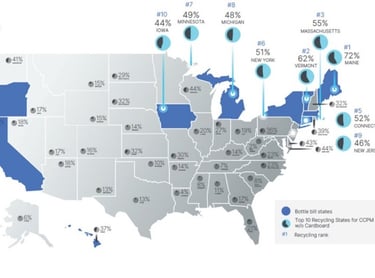
Recycling In Colorado
BUT Colorado is a different story -- we have a huge gap in recycling in our state. Colorado's recycling and composting rate is 16% -- half of the national average. It is clear that Colorado needs to do more. If you ask your neighbor - they will undoubtedly say that "yes -- of course I recycle" but the key issue is that our state has poor recycling habits.
Ecocycle - an amazing NGO in Boulder - has a mission " to innovate, implement, and advocate for local and global Zero Waste solutions to foster a more regenerative, equitable, and climate-resilient future." The Ecocycle vision is "Throughout the nation and the world, our “take-make-waste” society is replaced with Circular Economy strategies." Ecocycle has been active on recycling intiatives at a state and local level - they are currently working with Sustainable Windsor on multiple initiatives along with the Recycling Colorado team and the Front Range Waste Diversion program. As part of Ecocycle's great work - they provide an annual review of the recycling and composting efforts in Colorado.
In Ecocycle's latest annual report of the State of Recycling and Composting (https://ecocycle.org/resources/report-the-state-of-recycling-and-composting-in-colorado-2023/) - they make the following statement in the introduction:
Reduce, Reuse, Recycle . . . we’ve likely all heard of the “three Rs,” foundational to a Zero Waste, environmentally sustainable future. It would be reasonable to assume that abiding by the principles of the three Rs is second nature to us here in Colorado, given residents’ love for the state’s natural beauty, its parks and open spaces, mountains, rivers, and wildlife. But perhaps surprisingly, the state of Colorado has a lot of work to do when it comes to reducing, reusing, recycling, and composting our waste stream.
This isn’t breaking news. For the past six consecutive years, Eco-Cycle and CoPIRG have presented this report to draw attention to a glaring issue: Colorado’s recycling and composting rate continues to stagnate at a mere 16%, half the national average of 32%.1 Equally concerning is our consistent disposal rate of roughly 5.6 pounds per person per day. To turn the tide, we can’t rely solely on individual efforts. It’s time for systemic change statewide—a shift necessary to boost landfill diversion and prevent waste right from the start
The Flow of Waste
It is important to understand the flow of waste -- when your friendly trash hauler comes weekly to grab your waste. All waste goes to a transfer station and is then sorted - solid waste goes to the landfill.(As a side note - we continue to require more and more landfill in Northern Colorado which is a big problem) The recyclables may be pre-processed via a transfer station and then they are delivered to a Material Recovery Facility (MRF) which processes the recycled items (Manufacturing Facility in the diagram). This is known as single stream recycling.
If you want to see what happens in a MRF - visit https://www.youtube.com/watch?v=M5nmNKVNCBw.
Two big CHALLENGES here ...
(1) Many items that SHOULD be recycled end up in the landfill because people do not know what can be recycled (so they put it in the trash) and
(2) People put the "wrong" items into their recyclables. When "wrong items" hit the MRF, they can potentially contaminate other materials as the to-be recycled goods are sorted and processed. This is a huge issue - as it can lead to havng to discard large amount of recyclable items.
We will cover both of these challenges in the next section of training.

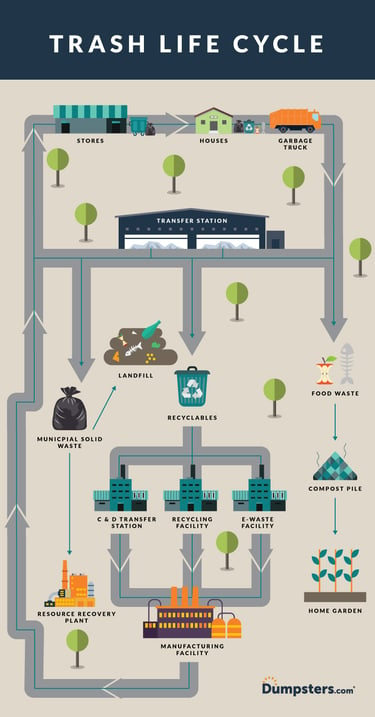

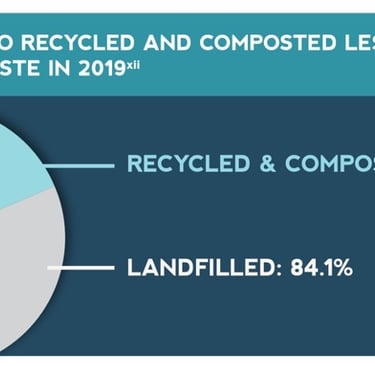
Recycling Myths
You might want to review Recycling Myths at https://ecocycle.org/eco-living/recycling-101/recycling-myths/ - this is another great piece of collateral from our friends at Ecocycle. It is an interesting read ... some of the key "myths"
“Don’t recyclables all get thrown in the landfill anyway? Why should I bother with recycling?” ... no ... if you put it into the recycle bin - it will go to recycling
“You can throw everything in one bin and they’ll sort it for you at the recycling center.” ... not quite ... in single stream recycling -- recyclables are mixed together, the MRF/Recycling Center separates aluminum, cardboard, plastic #1, plastic #2, and so on - however they are not here to sort through your garbage!
“If you put one contaminant in the recycling, the whole load will go to the landfill.” ... A mistake here and this is not a big deal -- the MRF does its best to pick out the contaminants - but this slows down the processing, costing both time and money
“Landfills sort through all the garbage, and pick out the recycling.” .... umm ... no no no ... once items end up at the landfill - they are treated as trash ...
“If an item has the recycling symbol on it, it means it’s recyclable.” .... unfortunately recycling guidelines change from place to place as well as hauler to hauler .. this is because recycling infrastructure and recycling markets are different - as a result, products really can’t be universally labeled for recycling (but as we will see - there are a lot of basic items that can ALWAYS be recycled ...
“Organics, like food waste, compostable products, and yard clippings will decompose in the landfill.” .... .. nope ... food waste, yard clippings, paper products, and compostable products compost if oxygen is present ... landfills are designed to be airtight .. so the result is methane emissions (which is one of the most potent greenhouse gases)
“Recycling uses more energy/resources than it saves.” ... And this is the most important myth to KNOCK DOWN ... let's look at the numbers ...
> Recycling aluminum cans saves 95% of the energy needed to make new cans from raw materials.
> Recycling steel and tin cans saves 60 to 74% of energy.
> Recycling paper saves about 60% of energy.
> Recycling plastic and glass saves about one-third of the energy compared to making those products from virgin materials.
> Based on EPA data, since 1970 the US has recycled and composted over 2.29 billion tons of materials, saving an estimated 4.5 billion barrels of oil and reducing our carbon emissions by more than 5.5 billion tons (MTCO2e), the equivalent of taking over 1 billion cars off the road for a year.
To continue the training - please click the SOLUTIONS button -- if you want to go back to the overview, click the OVERVIEW button below.
